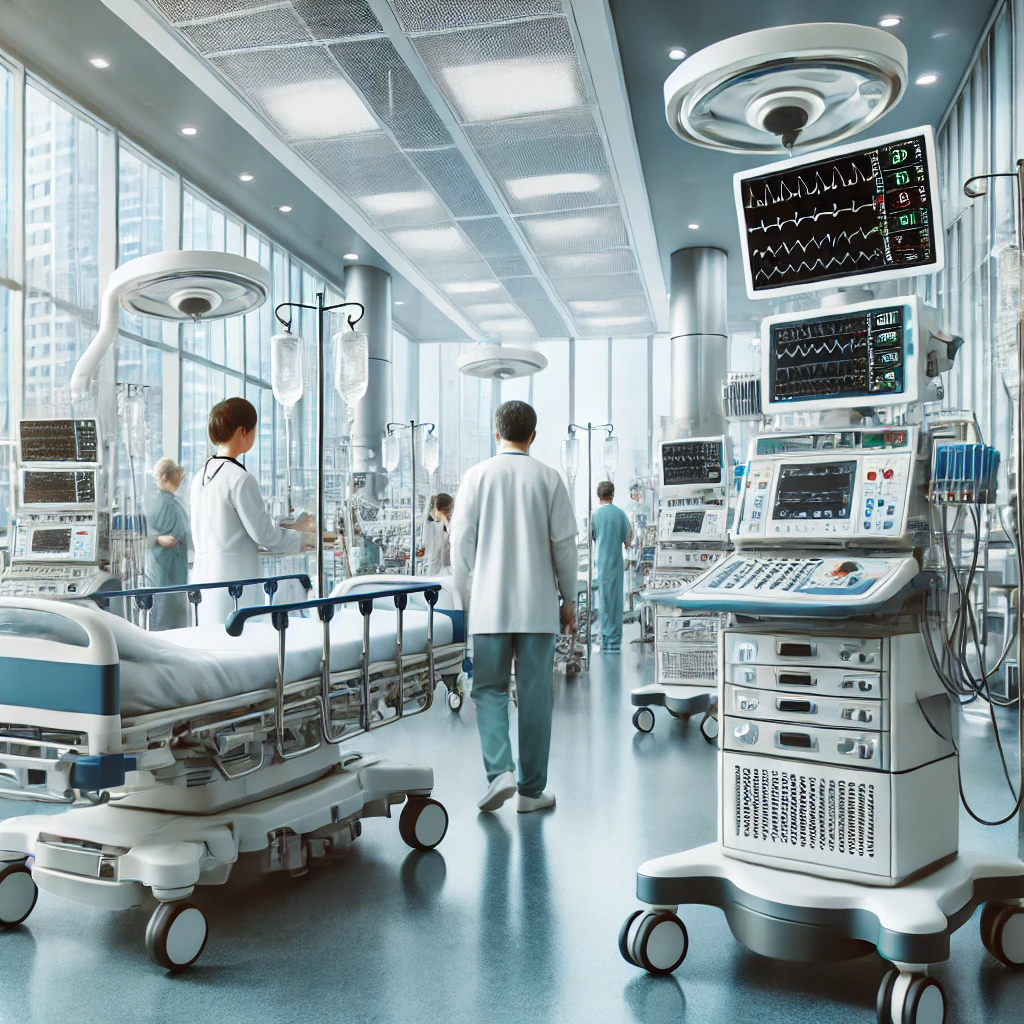Emergency Medical Devices: Must-Have Equipment for Rapid Response Units

Introduction In emergency medical situations, having the right equipment can mean the difference between life and death. Emergency medical devices play a critical role in stabilizing patients before they receive full hospital care. From ambulance units to emergency rooms, ensuring that medical teams are equipped with essential devices is paramount. In this article, we will explore the must-have emergency medical devices for rapid response teams.
1. Defibrillators Defibrillators are essential in cardiac emergencies, helping to restore normal heart rhythm in patients experiencing cardiac arrest.
- Automated External Defibrillators (AEDs): Designed for public use with automated voice instructions.
- Manual Defibrillators: Used by trained medical personnel to provide controlled electric shocks.
- Wearable Defibrillators: Monitor heart activity and deliver shocks as needed.
2. Ventilators Respiratory distress is a common emergency requiring immediate intervention.
- Portable Ventilators: Allow emergency teams to stabilize patients en route to the hospital.
- Bag-Valve Masks (BVMs): Used manually to provide assisted ventilation.
- CPAP and BiPAP Machines: Support breathing in patients with respiratory failure.
3. Suction Devices Clearing a patient’s airway is crucial in preventing asphyxiation.
- Portable Suction Machines: Remove obstructions from the airway.
- Wall-Mounted Suction Units: Found in ambulances and emergency rooms.
- Manual Suction Pumps: Provide suction in cases where power sources are unavailable.
4. Patient Monitoring Systems Continuous monitoring of vital signs helps emergency teams make informed decisions.
- Multi-Parameter Monitors: Track heart rate, blood pressure, oxygen saturation, and more.
- Portable Pulse Oximeters: Measure oxygen levels in blood quickly and efficiently.
- ECG Monitors: Assess heart activity and detect arrhythmias.
5. Trauma Kits and First Aid Supplies Emergency responders must have access to immediate medical supplies for trauma care.
- Tourniquets: Used to control severe bleeding.
- Hemostatic Dressings: Stop bleeding from open wounds.
- Splints and Braces: Immobilize fractures and sprains.
- Burn Kits: Contain burn dressings, cooling gels, and sterile wraps.
6. Infusion and Medication Delivery Systems Rapid medication administration can save lives in critical situations.
- IV Infusion Pumps: Deliver fluids and medications with precision.
- Syringe Pumps: Allow for controlled administration of small doses.
- Epinephrine Auto-Injectors (EpiPens): Provide immediate treatment for anaphylaxis.
7. Emergency Stretchers and Transport Equipment Safe patient transport is essential in emergency settings.
- Ambulance Stretchers: Adjustable stretchers designed for mobility and stability.
- Spinal Boards: Ensure safe transport of patients with suspected spinal injuries.
- Evacuation Chairs: Used for patient transport in confined spaces or staircases.
8. Communication and Navigation Devices Coordinating emergency response requires reliable communication tools.
- Two-Way Radios: Enable quick communication between paramedics and hospitals.
- GPS Navigation Systems: Help emergency teams reach patients faster.
- Telemedicine Devices: Allow real-time consultations with specialists.
9. Personal Protective Equipment (PPE) Protecting medical personnel is just as important as treating patients.
- Gloves, Masks, and Face Shields: Reduce the risk of contamination.
- Protective Gowns and Eye Protection: Ensure safety in high-risk environments.
- Respirators (N95, PAPR Systems): Protect against airborne pathogens.
10. Emerging Technologies in Emergency Medicine New advancements are improving the efficiency of emergency medical care.
- Portable Ultrasound Devices: Aid in rapid diagnosis in the field.
- AI-Integrated Monitors: Provide predictive analytics for early warning signs.
- Drone-Delivered Medical Supplies: Transport essential supplies to remote areas.
Conclusion Equipping emergency response teams with the right medical devices ensures timely and effective care, improving patient survival rates. As technology advances, emergency medical services will continue to benefit from more efficient, portable, and AI-powered solutions.


